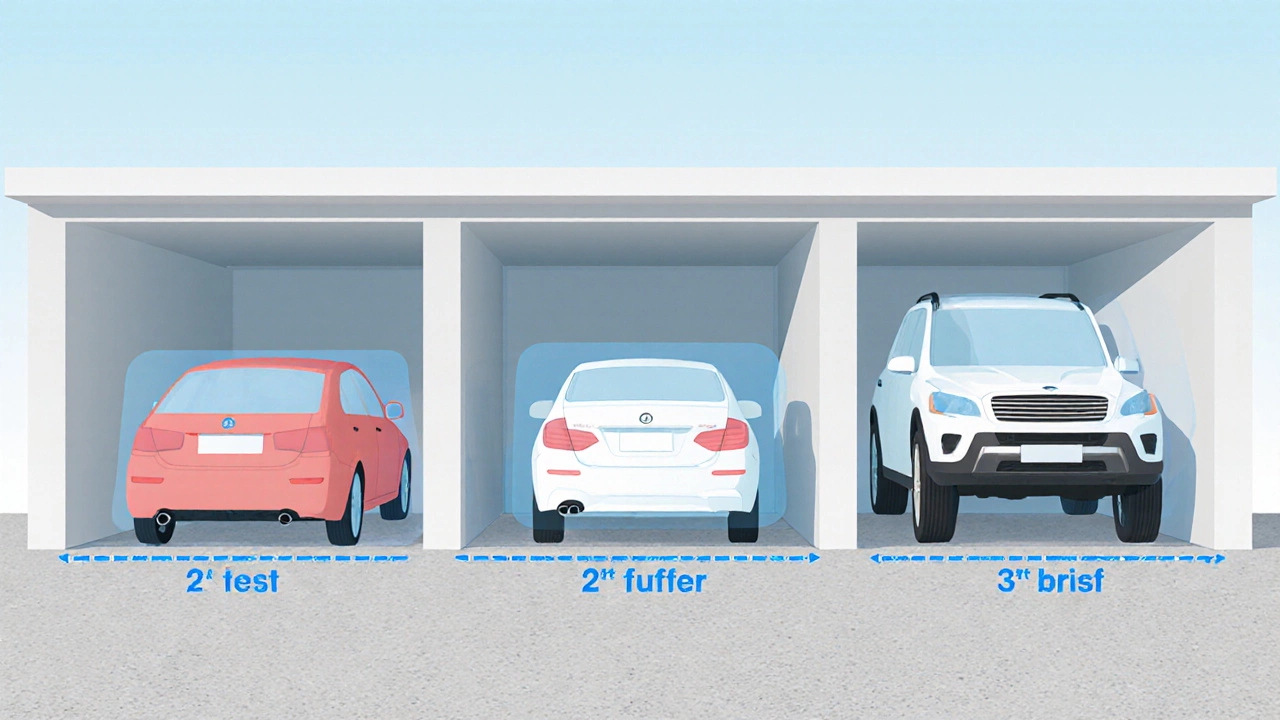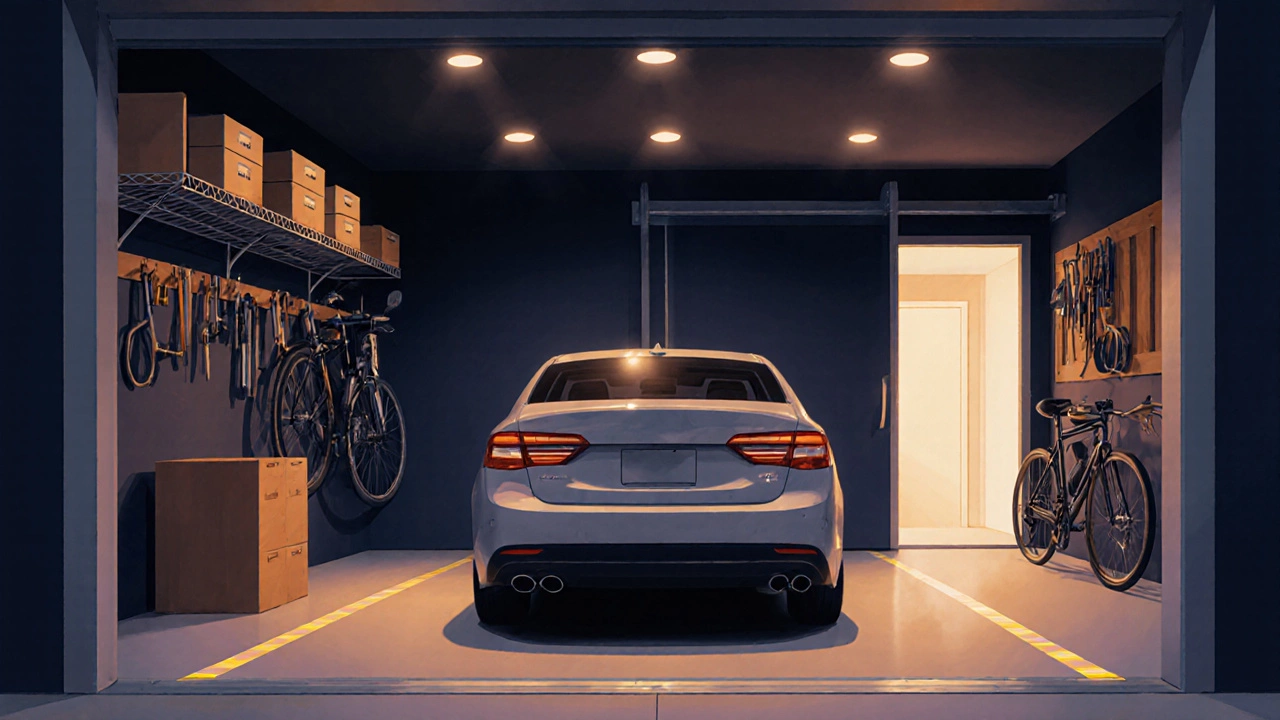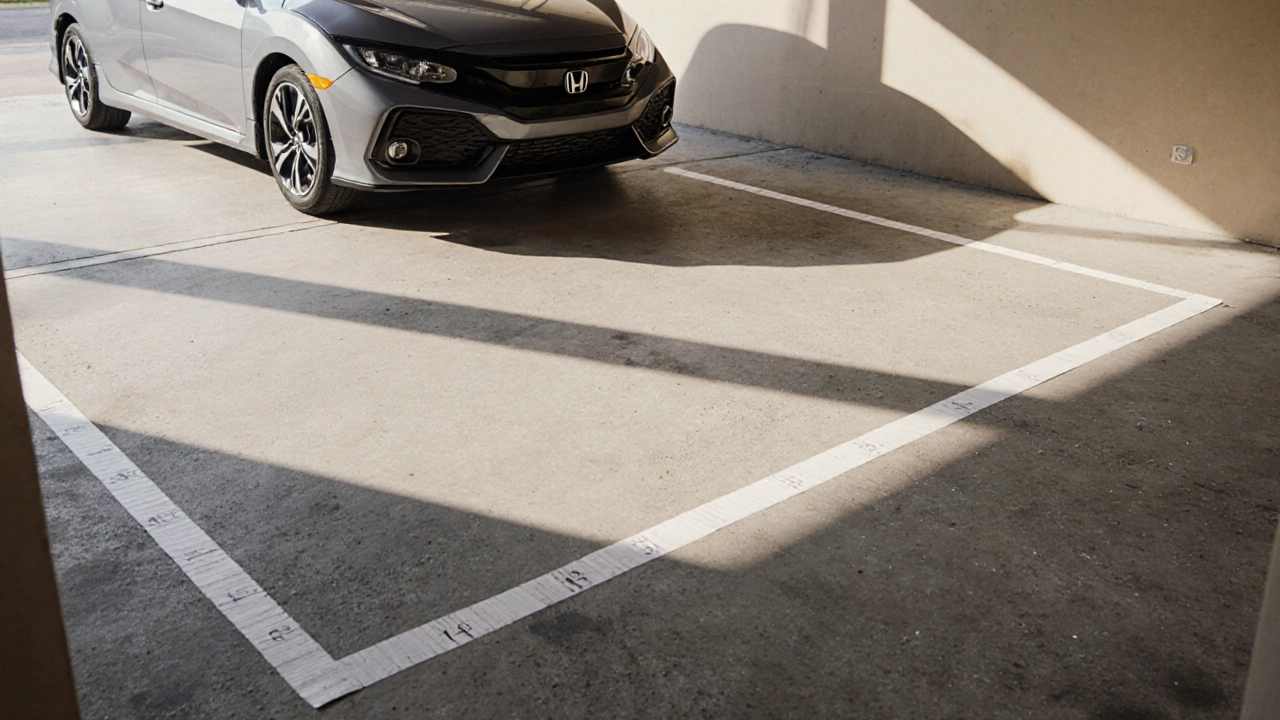Car Fit Calculator for 10x20 Garages
Vehicle Dimensions
Garage Measurements
Enter measurements to see if your vehicle fits in a 10x20 garage.
Wondering if your car can squeeze into a 10×20ft space? The short answer is usually yes, but you’ll need to check a few measurements before you start parking any vehicle inside a garage that size.
Quick Takeaways
- A 10×20ft garage provides about 200sqft of floor area - enough for most compact, mid‑size, and many SUVs.
- Key measurements to verify are vehicle length, width, height, and the door opening size.
- Allow at least 2ft of clearance on each side for comfortable door opening and maneuvering.
- Check floor load capacity if you plan to store a heavy truck or a lifted vehicle.
- Use a simple checklist before buying a garage kit or converting a shed.
Understanding Car Dimensions
Every vehicle has three critical dimensions:
- Length - measured from the front bumper to the rear bumper.
- Width - measured at the widest point, usually the side mirrors.
- Height - measured from the ground to the highest roof point.
These numbers vary widely across categories. For example, a typical compact car like a Honda Civic is about 14.7ft long, 5.8ft wide, and 4.5ft tall. A midsize sedan such as a Toyota Camry runs roughly 15.9ft long, 6.0ft wide, and 4.8ft tall. Larger SUVs - think a Ford Explorer - can stretch to 16.5ft in length, 6.5ft in width, and 6.0ft in height.
To compare these numbers directly with a 10×20ft garage, we’ll look at the space available after accounting for door clearance and maneuvering room.

Measuring Your 10x20 Space
First, confirm the exact interior dimensions of the garage. Exterior measurements are often printed on building plans, but interior space can be reduced by wall thickness, insulation, and interior trim.
Key checks:
- Garage floor width - should be close to 10ft, but subtract 1‑2in for interior studs.
- Floor length - aim for a true 20ft, again allowing a few inches for interior framing.
- Door opening width - most standard garage doors are 8ft wide; custom doors can be 9‑10ft.
- Clear ceiling height - at least 7ft is comfortable for most cars; taller vehicles need 8‑9ft.
- Floor load capacity - typical residential garage slabs handle 2,000lb per square foot, sufficient for most passenger cars but worth checking for heavy trucks.
Will Your Specific Car Fit?
Take your vehicle’s specifications and run a quick “fit test”. Subtract 2ft from each side of the garage width to create a safe maneuvering zone. That leaves you with 6ft of usable width. For length, keep a 3‑ft buffer at the front and back, giving you 14ft of clear parking length.
Now compare:
| Car Type | Length | Width | Height |
|---|---|---|---|
| Compact (e.g., Honda Civic) | 14.7ft | 5.8ft | 4.5ft |
| Mid‑size Sedan (e.g., Toyota Camry) | 15.9ft | 6.0ft | 4.8ft |
| Small SUV (e.g., Honda CR‑V) | 15.2ft | 6.2ft | 5.5ft |
| Full‑size SUV (e.g., Ford Explorer) | 16.5ft | 6.5ft | 6.0ft |
All of these fit comfortably within the 14ft usable length, and the width stays under the 6ft safe zone except the full‑size SUV, which just brushes the limit. If your door opening is only 8ft, you’ll need to consider side‑mirror fold‑in or straighten the mirrors inward to clear the edge.
Layout Tips for a Seamless Fit
- Center the car - park in the middle of the width to give equal space for door opening on both sides.
- Use wall-mounted hooks for bikes or tools instead of floor‑standing racks that eat up length.
- Install a ceiling‑mounted storage system for seasonal items; it keeps the floor clear.
- Consider a sliding or pocket door if the standard swing door cuts into your parking space.
- Leave a ½‑ft buffer behind the car for the rear tire to clear any floor vents.

Common Pitfalls and How to Avoid Them
Even if the numbers line up, a few real‑world issues can trip you up:
- Door width mismatch - a standard 8‑ft door is tight for vehicles with wide mirrors. Check the mirror fold‑in clearance before committing.
- Low ceiling - tall trucks or lifted SUVs can scrape the ceiling. Measure from the floor to the lowest beam.
- Insufficient floor strength - heavy trucks can crack a slab not designed for high loads. Verify the concrete thickness (typically 4‑in for residential garages).
- Poor lighting - dim lighting makes it harder to gauge distances, leading to scratches.
- Missing ventilation - a sealed garage can build up fumes; a small vent or exhaust fan helps.
Fit‑Check Checklist
- Measure your car’s length, width (including mirrors), and height.
- Record interior garage width, length, and door opening width.
- Subtract 2ft from each side for maneuvering clearance.
- Ensure ceiling height exceeds vehicle height by at least 1ft.
- Confirm floor load capacity meets or exceeds vehicle weight.
- Mark the parking spot with tape to visualize boundaries.
- Test drive the car into the space, using mirrors or a spotter.
- Adjust storage items or install additional clearance solutions as needed.
Frequently Asked Questions
Can a full‑size SUV fit in a 10×20 garage?
Most full‑size SUVs will fit lengthwise, but the width can be tight. You’ll need at least an 8‑ft door and should fold the side mirrors inward. A small clearance buffer (½‑ft) on each side helps prevent scrape.
What is the minimum ceiling height required for a sedan?
A typical sedan is around 4.5‑5ft tall. Aim for at least 7ft of clear ceiling space to give room for lighting fixtures and to avoid accidental bumps.
Do I need to reinforce the garage floor for a truck?
If the truck weighs over 5,000lb, check the slab thickness and concrete compressive strength. A 4‑in slab with 3,000psi concrete usually handles passenger vehicles, but heavier trucks may require additional reinforcement or a thicker slab.
Is an 8‑ft garage door enough for a compact car?
Yes. Most compact cars are under 6ft wide, and the door opening provides ample space for the doors to swing open fully.
How much clearance should I leave around the car?
A minimum of 2ft on each side and 3ft at the front and rear gives enough room to open doors, walk around, and avoid scratches.
